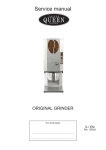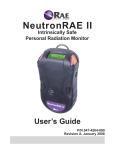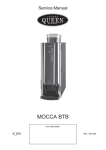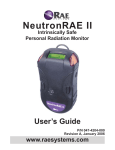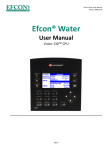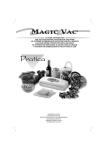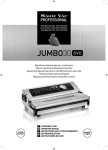Download Magic Vac Dinamika
Transcript
gb about vacuum packing ABOUT VACUUM PACKING The deterioration of food is caused by chemical reactions that occur in food which is exposed to the air, temperature, moisture, the action of enzymes, the growth of micro-organisms or contamination by insects. Vacuum packing reduces the absolute pressure of the air inside the package or container, by removing the oxygen and eliminating volatile compounds. The oxygen in the air causes food to deteriorate, firstly through a process of oxidation, causing the loss of nutritional values, flavour and all the food’s qualities. Air also promotes the growth of most micro-organisms and causes the frost burns which occur on frozen food. Vacuum packing extends the shelf life of many fresh foods, by reducing oxidation and preventing the proliferation of microbes (bacteria and mould). However, many fresh foods contain sufficient moisture to encourage the growth of micro-organisms that can grow with or without air. To prevent the deterioration of such foods, they must be preserved at low temperatures. Micro-organisms like mould, yeast and bacteria are present everywhere, but they can cause problems only in certain conditions. For example, mould will not grow in environments with a low oxygen content, or in the absence of moisture or humidity. To grow, yeast requires moisture, sugar and a moderate temperature, but it can grow in the presence or absence of air. Refrigeration slows the growth of yeast and freezing blocks it completely. Bacteria can multiply with or without air, depending on their type. Clostridium Botulinum is a very dangerous type of bacteria which can develop in environments which do not contain acids, are without oxygen and are exposed to temperatures in excess of 4°C for long periods of time. Foodstuffs vulnerable to attack by Clostridium Botulinum are those with low acidity (like red meat, poultry, fish, seafood, olives in brine, eggs, mushrooms and vegetables) and medium acidity foods like virtually all vegetables and many fruits (ripe tomatoes, onions, red pepper, figs and cucumbers). To prevent contamination by this bacterium, it is essential to observe the basic rules of hygiene and, to prevent its harmful proliferation in preserved foods, they must be refrigerated for short periods and/or frozen for long-life preservation. However, such foods must be eaten immediately after heating. Important: you must consume immediately any food which has been heated while still sealed in MAGIC VAC® bags. Leaving the food to cool slowly at room temperature in the sealed vacuum bag may cause several harmful micro-organisms to multiply, in just a few hours, to values that are healththreatening. Several enzymes found in foods cause increasingly noticeable changes in colour, structure and flavour; such changes depend on the preservation time, temperature and, above all, the presence of air. To halt the action of enzymes, vegetables must be blanched briefly using steam or a microwave oven. Food which contains a high percentage of acidity, like most fruits, do not require blanching. The absence of air created by the vacuum will in any case slow down or prevent the action of these enzymes. Insect larvae are frequently found in many low water content or dried foods which have not been vacuum packed or frozen, and they can develop during preservation and thus contaminate the food. Some products like flour and grain might contain larvae, but using MAGIC VAC® vacuum packing will stop them developing into insects. HOW TO PRESERVE FOOD IN MAGIC VAC® BAGS Vacuum packing for the freezer First of all, use the freshest possible food. The MAGIC VAC® system will allow you to retain all the freshness of the food only if it is properly preserved. Some foods have a soft consistency which could be damaged by vacuum packing the product when fresh. To prepare delicate foods like meat, fish, berries, bread, etc., it is advisable to pre-freeze them first. In the first twenty-four hours there is no risk of freezer burns, so you can vacuum pack the products frozen the previous day in MAGIC VAC® bags, and then keep them in the freezer for long periods so as to preserve all the nutritional values and flavour of the product you have packed. When vacuum packing soups, stews or other liquid food, pre-freeze it in a pan or high-strength dish. When the food becomes solid, vacuum pack it, add a label and replace in your freezer. To vacuum pack vegetables, peel them and then blanche them briefly in boiling water or a microwave oven until they are warm but still firm. Then vacuum pack them in convenient portions. 1 If the food is not pre-frozen, leave an extra 5 cm in the length of the bag to allow for expansion due to freezing. With regard to meat and fish, it is advisable to place the food on a paper towel and vacuum pack it with the towel in the bag. This will absorb any moisture in the food. To preserve food like focaccia, crêpes and small hamburgers, stack them on top of each other, placing greaseproof paper or film between each piece. This will make it easier to remove some of the food, repackage the rest and replace it immediately in the freezer. Vacuum packing for the fridge For busy households, food can be prepared in advance, then vacuum packed and kept in the fridge for use at different times, ready to be heated as and when necessary. Vacuum packing for the larder Even foods that can keep at room temperature (like, for example, coffee, flour, pasta, sugar, etc.) can benefit from vacuum packing. If these products are to remain unused for several days, such as when you go away on holiday, it is advisable to protect all foods by vacuum packing. They will keep better and moisture, mould and insects will not attack and ruin them. Defrosting MAGIC VAC® bags To defrost vacuum packed food such as meat, fish, fruit, vegetables or other delicate foodstuffs, place it on the lowest shelf in the fridge to defrost slowly; bread and focaccia should be left at room temperature, while soups or other liquid foods should be immersed in hot water still in the vacuum bags until they reach the right temperature. When you leave food at room temperature or heat it in a bain-marie, make sure you cut one corner of the bag to let the steam escape. When the food has been defrosted, it must be consumed immediately. Do not re-freeze it. Repackaging pre-packed food Many foodstuffs, like cheese and meat, are sold pre-packed in factory-prepared vacuum bags. To retain the flavour and freshness of these foods, repackage them in MAGIC VAC® bags after the factory package has been opened. Pre-packed foods must always be consumed by the use-by date shown on the original package. They must also be handled with the greatest care and hygiene when repackaging. Useful tips… - For food with tapered ends or sharp edges, like bones and spaghetti, pad the edges with paper towels to prevent perforating the bag. - Fragile and delicate foodstuffs like strawberries, crackers or biscuits should be preserved in MAGIC VAC® containers. - There are many non-food products which can be vacuum packed, such as camping equipment including matches, first aid kits and clean, dry clothes. You can even preserve the emergency triangle in the car. Silverware and collections can also be vacuum packed to protect the items against oxidation, etc. HOW TO PRESERVE FOOD IN MAGIC VAC® CONTAINERS Warning: Do not use plastic or glass containers that are not suitable since they could implode under the vacuum pressure of MAGIC VAC® and cause injury. Freezing in containers To freeze food in plastic containers use only MAGIC VAC® containers or, in the case of glass receptacles, used tempered glass suitable for freezer temperatures. Vacuum packing food in containers Vacuum packing in containers is ideal for products that you use frequently. Dried foodstuffs like pasta, rice, flour, sugar, crisps, savouries or biscuits, and pet food, will maintain all their shape and freshness. Salad foods and vegetables can be cleaned for the whole week and kept in a MAGIC VAC® container. 2 They will remain firm and fresh. To absorb excess moisture, fold a paper towel and place it on the bottom of the container. Warning: Liquids must be cooled before vacuum packing. Hot liquids will expand and leak from the container during depressurising. Food in powder or granule form can be covered with a paper towel before vacuum packing. This will prevent the powder or granules from getting into the vacuum paths or being deposited in the Vacuum Cap seal. Oil used once for frying can be filtered, cooled, vacuum sealed in a MAGIC VAC® container and kept in the fridge. This will enable you to use the oil again at least once, since it has been preserved in an airless and cold environment, thereby retaining its characteristics. Larder items like flour, rice and cake mixes stay fresh for longer if they are vacuum packed. Nuts and condiments retain their flavour and will not become rancid. Tips for preserving food in jars To preserve food in jars, use lids which have been checked and are free from defects. To create and maintain a good vacuum, the seals of the lids must be in perfect condition. To keep the lids in good condition, immerse them in boiling water for three minutes and then rub the dry seal with a drop of oil. This will restore the necessary elasticity to the seals of the lids. POINTS TO REMEMBER In order to optimise the preservation of foods and ensure perfect hygiene, a number of important rules must be followed: • Make sure you wash your hands thoroughly and clean all the implements and surfaces you will be using to cut and vacuum pack the food. • If possible, wear gloves when handling the food. • Once perishable food has been packed, place it in the fridge or freeze it immediately, maintaining a constant fridge or freezer temperature. Do not leave the food for a long time at room temperature. • Place the containers of vacuum packed food carefully in the fridge or freezer so that the food will cool rapidly to a low temperature. • After opening tinned food or food that has been factory vacuum packed, it can be vacuum packed again. Follow the instructions to cool the food after opening and put it away as soon as it has been vacuum packed. • Pre-packed foods must in any case be consumed by the use-by date shown on the original package. • Once you have warmed up or defrosted perishable food, it must be eaten. Do not eat perishable food if it has been left at room temperature for many hours. This is especially important if the food has been prepared with a dense sauce, in a vacuum pack or in other low-oxygen content environments. • Do not defrost food in boiling water or using other heat sources, unless the food in question is liquid (soups, juices, etc.). • Vacuum packing extends the life of dried food. Food which has a high fat content becomes rancid due to oxygen and heat. Vacuum packing extends the life of food like nuts, coconuts, or cereal products. Store in a cool, dark place. • Vacuum packing will not extend the life of fruit and vegetables such as bananas, apples, potatoes and several vegetables, unless it has been peeled prior to vacuum packing. • Soft foods and food with a delicate structure (like fish, berries, etc.) must be pre-frozen for one night before they can be vacuum packed and placed in the freezer. • Vegetables like broccoli, cauliflower and cabbage give off gas when they are vacuum packed fresh for storage in the freezer. To prepare these foods for vacuum packing, heat and freeze them. • To ensure correct and safe vacuum packing, use only original MAGIC VAC® bags, containers and accessories. All rights reserved. Partial or total reproduction prohibited. Given the constant technological progress being made in this sector, FLAEM NUOVA reserves the right to make technical and functional changes to the product without prior notice. 3 STORAGE LIFE WITH MAGIC VAC® Preservation times at atmospheric pressure Preservation times with MAGIC VAC� Refrigerated foods (5 ± 2 °C) Red meat White meat Whole fish Game Cooked pork products Sliced pork meats Soft cheese Hard and semi-hard cheese Vegetables Fruit 3-4 days 2-3 days 1-3 days 2-3 days 7-15 days 4-6 days 5-7 days 15-20 days 1-3 days 5-7 days 8-9 days 6-9 days 4-5 days 5-7 days 25-40 days 20-25 days 14-20 days 25-60 days 7-10 days 14-20 days 2-3 days 2-3 days 3-5 days 2-3 days 10-15 days 8-10 days 6-8 days 10-15 days 6-8 days 25-40 days 4-6 months 3-4 months 8-10 months 15-20 months 10-12 months 18-24 months 1-2 days 4-6 months 5-6 months 5-6 months 4-5 months 3-4 months 2-3 months 5-6 months 1-2 months 1-2 months 6-8 days 12 months 12 months 12 months 12 months 12 months 12 months 12 months 12 months 12 months Cooked and refrigerated foods (5 ± 2 °C) Purees and vegetable soups Pasta and risotto Boiled and roast meats Desserts with fillings (cream and fruit) Frying oil Frozen foods (-18 ± 2 °C) Meat Fish Vegetables Food at ambient temperature (25 ± 2 °C) Bread Packed biscuits Pasta Rice Flour Dry fruit Ground coffee Powder tea Freeze-dried products Powdered milk Approximate values which in any case depend on pack integrity and on original food quality characteristics. These values also refer to packaging obtained with machine- “original” bags/rolls, containers and accessories combination. The times shown on the chart cannot be guaranteed with use of bags/rolls, containers and accessories of other brands. The manufacturer therefore disclaims liability. IMPORTANT: Keep perishable foods in the freezer or fridge. Vacuum packing extends the life of food, but does not turn it into a “preserve”, i.e. a stable product at ambient temperature. 4 Il c ibo conservato naturalmente! Food storage naturally! Conservation naturelle des al iments! Für natürliche Lebensmittel-Aufbewahrung! Los alimentos conservados naturalmente! Os alimentos conservados naturalmente! Elettromedicali / Elettrodomestici Via Colli Storici, 221, 223, 225 25015 S. MARTINO DELLA BATTAGLIA (Brescia) - ITALY Tel. +39 030 9910168 r.a. Fax +39 030 9910287 www.magicvac.it Published by FLAEM NUOVA® cod. 15601-0 rev. 02/2013 © 2013 FLAEM NUOVA® All rights reserved






